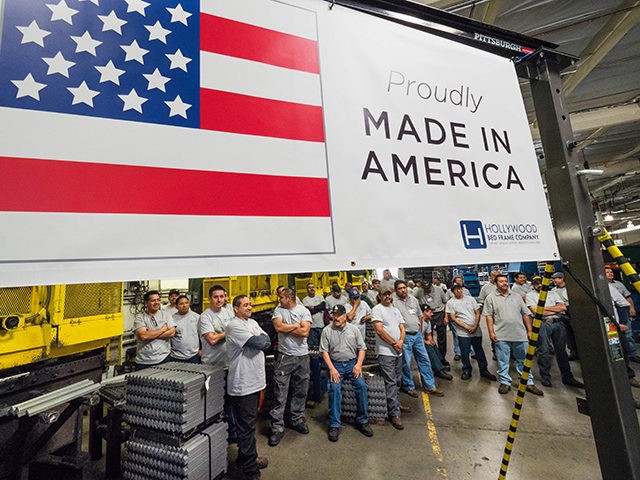Two surveys of U.S. manufacturers sent up warning signals Monday about weakness in the factory sector.
An index of factory activity published by the Institute for Supply Management fell to 52.1 in May. Economists had expected a slight improvement from April’s level. Instead, it fell to the lowest level since October 2016, prior to Donald Trump’s election.
Readings above 50 on the ISM index indicate activity is expanding, so the May level indicates on-going expansion but at a slower pace than earlier in the year or last year.
It was not all bad news. The ISM read of manufacturing production weakened in May but new orders improved. The employment component of the index was also up sharply.
A different survey, from IHS Markit, hit its lowest level since 2009. The ISM index is older and more influential. It is used by many US economic nowcast and forecast models, including those of the New York and Atlanta Federal Reserve banks. But some analysts think the IHS survey may have a better track record at predicting changing economic conditions. After taking divergent paths earlier in the year and late last year, however, both surveys indicate slowing growth.
Despite claims that heightened trade tensions with China are responsible for the slowdown in manufacturing, it actually preceded the Trump administration’s tariff hike. In fact, there was a noticeable slowdown in April, when it was widely believed that China and the U.S. were on the verge of a trade agreement. Orders for durable goods fell 2.1 percent in April, according to the Commerce Department. Industrial production declined 0.5% in April.
Also undermining the tariff-blaming narrative are indications that inflationary pressures eased in May, according to the IHS Markit survey. Both input costs and output prices increased at slower rates than earlier, which is the opposite of what would be expected if tariffs were pushing up costs or consumer prices. The ISM survey found prices rebounding from a slump in April but consistent with stability.
“Prices rebounded in May, as price issues remain in electronic components, food ingredients, wood products and other areas, which are offset by steel and aluminum declines,” Timothy Fiore, chairman of the ISM’s Manufacturing Business Survey Committee, said in a statement.
A slowdown in manufacturing, if sustained, could raise pressure on the Federal Reserve to cut interest rates. Indeed, the Fed’s decision to hike rates in December may be the best explanation for the weakness in manufacturing. It has strengthened the dollar, making U.S. exports less attractive, and may be weakening investment around the globe due to the relative attractiveness of U.S. Treasurys.
Long-term Treasury yields fell on Monday. Yields move in the opposite direction of bond prices. Falling Treasury yields can be an indication that investors are seeking the “safety” of U.S. government bonds, even at the cost of accepting lower returns.
Manufacturing represents a smaller portion of the U.S. economy than services. But it can be a weather vane for the direction of economic growth overall. And since the sector exports a sizeable portion of its production, it can be weighed down by economic slumps or falling demand outside the U.S.

COMMENTS
Please let us know if you're having issues with commenting.